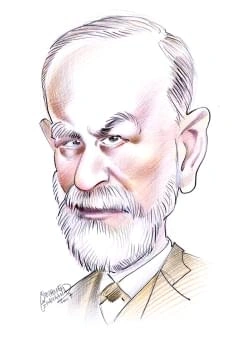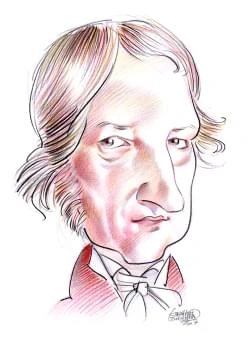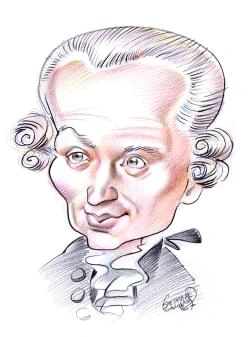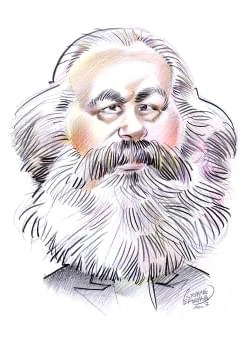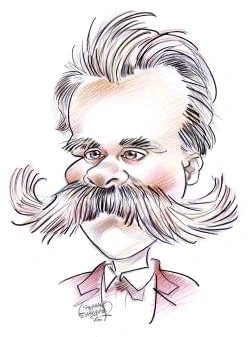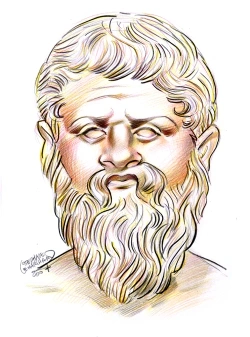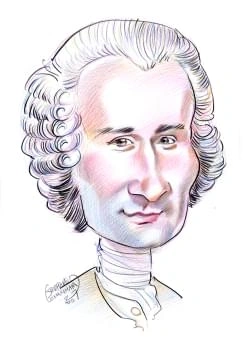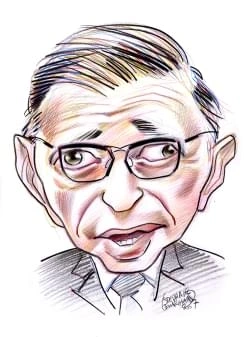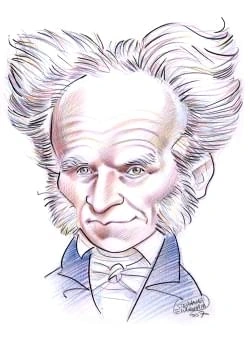408 résultats pour "setter"
-
Persian Gulf War.
to “use all necessary means” to force Iraq from Kuwait if Iraq remained in the country after January 15, 1991. The Iraqis rejected the ultimatum. Soon after the vote,the United States agreed to a direct meeting between Secretary of State James Baker and Iraq’s foreign minister. The two sides met on January 9. Neither offered tocompromise. The United States underscored the ultimatum, and the Iraqis refused to comply with it, even threatening to attack Israel. For the United States, themeeting was...
-
Persian Gulf War - History.
to “use all necessary means” to force Iraq from Kuwait if Iraq remained in the country after January 15, 1991. The Iraqis rejected the ultimatum. Soon after the vote,the United States agreed to a direct meeting between Secretary of State James Baker and Iraq’s foreign minister. The two sides met on January 9. Neither offered tocompromise. The United States underscored the ultimatum, and the Iraqis refused to comply with it, even threatening to attack Israel. For the United States, themeeting was...
-
Persian Gulf War - U.
to “use all necessary means” to force Iraq from Kuwait if Iraq remained in the country after January 15, 1991. The Iraqis rejected the ultimatum. Soon after the vote,the United States agreed to a direct meeting between Secretary of State James Baker and Iraq’s foreign minister. The two sides met on January 9. Neither offered tocompromise. The United States underscored the ultimatum, and the Iraqis refused to comply with it, even threatening to attack Israel. For the United States, themeeting was...
-
Capitalism.
Physiocracy is the term applied to a school of economic thought that suggested the existence of a natural order in economics, one that does not require direction from the state for people to be prosperous. The leader of the physiocrats, the economist François Quesnay, set forth the basic principles in his Tableau économique (1758), in which he traced the flow of money and goods through the economy. Simply put, this flow was seen to be both circular and self-sustaining. More important, however...
-
William McKinley.
gold standard. McKinley voted for it in exchange for support for his tariff bill. His vote angered Eastern bankers and industrialists but helped lessen Western oppositionto his stand on the tariff. D Governor of Ohio Because he was a champion of protective tariffs, as well as an extremely popular politician, McKinley attracted the attention of a Cleveland industrialist, Marcus AlonzoHanna. Hanna was eager to be the maker of a president and to be the man who exercised power behind the scenes. In...
-
William McKinley
gold standard. McKinley voted for it in exchange for support for his tariff bill. His vote angered Eastern bankers and industrialists but helped lessen Western oppositionto his stand on the tariff. D Governor of Ohio Because he was a champion of protective tariffs, as well as an extremely popular politician, McKinley attracted the attention of a Cleveland industrialist, Marcus AlonzoHanna. Hanna was eager to be the maker of a president and to be the man who exercised power behind the scenes. In...
-
Arithmetic
I
INTRODUCTION
Arithmetic, branch of mathematics that arises from counting, the most basic mathematical operation.
Subtract the units: 6 - 3 = 3. Then subtract the tens column: 6 – 2 = 4. The results of these two single-digit subtractions, written side by side, provide the answer: Subtraction is a bit more complicated if we need to subtract a larger digit from a smaller one. For example, when subtracting 47 from 92, the units value (7) of 47 isgreater than the units value (2) of 92. We can handle this situation using a procedure called borrowing, which is like carrying in reverse. Ten units can be borrowe...
-
Protestantism.
F England The Anglican Church became the established church in England when Henry VIII assumed (1534) the ecclesiastical authority over the English church that had previouslybeen exercised by the pope. Henry’s motive was to annul his marriage to Catherine of Aragón rather than to reform church doctrine, and he imposed severe lawsupholding the major tenets of medieval Catholicism. Under King Edward VI and Queen Elizabeth, however, the Anglican Church developed a distinctly Protestant creedthat w...
-
-
Nicaraguan Revolution.
Directorate. Within a year Robelo and Violeta Chamorro left the junta, and the Council of State was reorganized to guarantee an overwhelming Sandinista majority.Elections were postponed, restrictions were placed on the media, and relations with the Roman Catholic Church became increasingly tense. Two non-Sandinistasreplaced Robelo and Chamorro on the junta, but they had little power, and the government’s relations with opposition political parties and the private business sectordeteriorated. A D...
-
Cat.
I
INTRODUCTION
Cat, small, mainly carnivorous animal, Felis silvestris catus, member of
D Coat Colors The domestic cat's original coat color was probably grayish-brown with darker tabby stripes, a color that provides excellent camouflage in a variety of environments. Allother coat colors and patterns are the result of genetic mutations; for example, solid coat colors such as black and blue are the result of a gene that suppresses tabbystripes; an orange coat is the result of a gene that transforms black pigment to orange; and a solid white coat is the result of a gene that complet...
-
Cat - biology.
D Coat Colors The domestic cat's original coat color was probably grayish-brown with darker tabby stripes, a color that provides excellent camouflage in a variety of environments. Allother coat colors and patterns are the result of genetic mutations; for example, solid coat colors such as black and blue are the result of a gene that suppresses tabbystripes; an orange coat is the result of a gene that transforms black pigment to orange; and a solid white coat is the result of a gene that complet...
-
Roman Mythology.
Her temple on the Aventine Hill in Rome was a center for organizations of skilled craftspeople. According to tradition, in 509 BC the dynasty of Etruscan kings ended and the Roman Republic was founded. The republic was ruled by two chief magistrates, called consuls, who were elected by the people to one-year terms. During the time of the republic, the Capitoline temple became the most important public shrine of theRoman people and the focus of public worship. Each January, the new consuls offer...
-
Horse Racing.
interested parties claim the same horse at the same price, lots are drawn to determine the winning offer. Knowledgeable owners and trainers may use claiming races toobtain, at bargain prices, horses whose former owners underestimated the potential of their animals. Two other types of contests are match races and walkovers. A match race pits only two horses, almost always that season’s most successful racers, in a head-to-headduel. A walkover occurs when only one horse has not been scratched (w...
-
Soccer's Big Show Comes to the United States.
There were many doubters, both overseas and within the United States. Some U.S. sportswriters derided the idea of holding the World Cup in the United States asakin to staging the World Series in India—how could there be any local interest? Foreign critics felt that money was the sole reason for FIFA's decision and that thesport was about to be cheapened to make it acceptable to Americans. The rumors flew: FIFA was going to enlarge the goals, it would allow timeouts (unheard of inthe sport) to ac...
-
Atlantic Slave Trade.
members of the planters’ society. Through most of the years of the Atlantic trade, prices for Africans remained favorable in relation to the price of the crops theyproduced. They were, thus, the best economic solution for plantation owners seeking inexpensive labor. The Atlantic slave trade began as a trickle in the 1440s and grew slowly through the 17th century. By 1700, 25,000 slaves, on average, were crossing the Atlantic everyyear. After 1700 the trade grew much more rapidly to a peak in the...
-
British Empire .
B1 The Seven Years’ War During the Seven Years’ War in Europe (1756-1763), Britain made large imperial gains at the expense of France. The North American segment of the Seven Years’ Warwas known as the French and Indian War. It was launched by the British against French possessions in North America in 1754, and in 1758 the British captured theFrench fortress of Louisbourg, which gave them access to French territory in the St. Lawrence Valley. In the following year Québec was captured, marking t...
-
-
Japan - country.
island’s fertile soils support agriculture and provide the vast majority of Japan’s pasturelands. In addition, Hokkaidō contains coal deposits, and the cold currents off itsshores supply cold-water fish. Winters are long and harsh, so most of Hokkaid ō is lightly settled, housing about 5 percent of Japan’s population on approximately 20 percent of its land area. However,its snowy winters and unspoiled natural beauty attract many skiers and tourists. Hokkaid ō is thought of as Japan’s northern fr...
-
Brain.
The hypothalamus lies beneath the thalamus on the midline at the base of the brain. It regulates or is involved directly in the control of many of the body's vital drivesand activities, such as eating, drinking, temperature regulation, sleep, emotional behavior, and sexual activity. It also controls the function of internal body organs bymeans of the autonomic nervous system, interacts closely with the pituitary gland, and helps coordinate activities of the brain stem. D Brain Stem The brain st...
-
Roman Art and Architecture - History.
Racecourses or circuses were also built in many cities for holding chariot races and horse races. Rome’s circus-shaped Piazza Navona occupies the site of one that wasbuilt during the reign ( AD 81-96) of the emperor Domitian. The largest circus in Rome, the Circus Maximus, held about 200,000 spectators. E Public Baths Large cities and small towns alike also had public baths ( thermae ); under the Republic they were generally made up of a suite of dressing rooms and bathing chambers with hot- ,...
-
Atom
I
INTRODUCTION
Water Molecule
A water molecule consists of an oxygen atom and two hydrogen atoms, which are attached at an angle of 105°.
spontaneously break apart and change, or decay, into other atoms. Unlike electrons, which are fundamental particles, protons and neutrons are made up of other, smaller particles called quarks. Physicists know of six different quarks.Neutrons and protons are made up of up quarks and down quarks —two of the six different kinds of quarks. The fanciful names of quarks have nothing to do with their properties; the names are simply labels to distinguish one quark from another. Quarks are unique amo...
-
Labor Unions in Canada - Canadian History.
job. Before collective bargaining begins, workers elect a bargaining committee. The bargaining committee determines the workers’ demands and strategy innegotiations with the employer. Local unions usually are part of national or international unions. These national and international unions employ a staff for organizing workers at the local level, doingresearch, educating union members about labor and political matters, and working with local union leaders. Unions hold regular conventions of dele...
-
Stock Exchange.
A Example of a Trade In an example of a trade, an investor wanting to buy 200 shares—also known as two round lots, of 100 shares each—of IBM stock will telephone or e-mail the order to abrokerage firm. This communication is normally made to an individual called a stockbroker. The investor might desire to buy the shares at the market, or current, price.On the other hand, the investor may choose to pay no more than a set amount per share. The brokerage firm then contacts one of its floor brokers...
-
Roman Empire - history.
the master of Rome. Three years later the Senate proclaimed him Augustus, the supreme ruler. III THE EMPIRE UNDER AUGUSTUS Roman Emperor AugustusAugustus, the first Roman emperor, brought peace, order, and prosperity to Rome after the civil wars that followed the assassinationof Roman leader Julius Caesar. Caesar had adopted the young Octavian, later known as Augustus, as his heir. After a victory overMark Antony and Cleopatra at Actium, Augustus had absolute power over the entire Roman Empire....
-
Native American Policy.
of white settlement dominated policy during the second quarter of the 19th century. IV REMOVAL PERIOD The idea of moving Native Americans to a different part of the country was not new. After the Louisiana Purchase in 1803, President Thomas Jefferson had suggestedthat tracts of land in this vast new territory could be given to native peoples if they agreed to cede their lands in the eastern part of the country. Transfers occurred in apiecemeal way, but no consistent removal program developed u...
-
-
September 11 Attacks - U.
around and flew it back toward Washington, D.C. Flying low and fast, the airplane hit the Pentagon at 9:37 AM. In a bit of good fortune, the plane crashed into the west side of the building, which had recently been reinforced with stronger construction and blast-resistant windows in order to withstand a terrorist attack. Even so, theplane penetrated three of the Pentagon’s five concentric rings, taking a chunk out of the building and incinerating dozens of offices and the people who worked in t...
-
Ulysses S.
In the autumn of 1862, Grant began planning the drive on Vicksburg, Mississippi, the Confederate stronghold on the Mississippi River, which was to yield one of hisgreatest military successes. After several unsuccessful attempts on Vicksburg during the winter, Grant devised a new strategy of attack. In April 1863 he marched hisarmy south along the west side of the river to a point well below the heavily defended city. There, with the aid of the Union river fleet, he crossed the river and began as...
-
Ulysses S.
In the autumn of 1862, Grant began planning the drive on Vicksburg, Mississippi, the Confederate stronghold on the Mississippi River, which was to yield one of hisgreatest military successes. After several unsuccessful attempts on Vicksburg during the winter, Grant devised a new strategy of attack. In April 1863 he marched hisarmy south along the west side of the river to a point well below the heavily defended city. There, with the aid of the Union river fleet, he crossed the river and began as...
-
Labor Unions in the United States - U.
National Guard troops were used against the strikers, with the result that the strike was lost and the union that conducted it virtually destroyed. In 1894 a strike by theAmerican Railway Union against the Pullman Palace Car Company was defeated by an injunction issued under the Sherman Antitrust Act of 1890, which made acombination or contract in restraint of trade illegal. Thereafter employers used injunctions with increasing frequency and effectiveness as an antistrike weapon. See also Hours...
-
Belarus - country.
In the last complete census conducted in the Soviet Union in 1989, the population of Belarus was 10,151,806; a 2008 estimate was 9,685,768, giving the country apopulation density of 47 persons per sq km (121 per sq mi). The most notable demographic trend since the 1950s has been the steady migration of the population fromthe villages to urban centers, and the correspondent aging of the population remaining in the rural areas. In 1959 urban residents accounted for 31 percent of thepopulation; in...
-
Insect - biology.
they almost always have six legs. In some insects, such as beetles, the legs are practically identical, but in other insects each pair is a slightly different shape. Still otherinsects have specialized leg structures. Examples are praying mantises, which have grasping and stabbing forelegs armed with lethal spines, and grasshoppers andfleas, which have large, muscular hind legs that catapult them into the air. Mole crickets’ front legs are modified for digging, and backswimmers have hind legs de...
-
American Westward Movement - U.
British expansion. However, Native Americans of the Great Lakes and Ohio Valley lashed out against the English in an attempt to preserve their independence, theirland, and their way of life. With the Ottawa chief Pontiac as their most visible leader, the tribes waged a bloody and costly war. As a result, the British governmentdecided to keep the white settlers apart from the Native Americans. It issued the Royal Proclamation of 1763, banning all white settlement beyond the Appalachians andstatin...
-
Culture.
form of knowledge, such as scientific discoveries; objects, such as works of art; and traditions, such as the observance of holidays. C1 Ethnocentrism and Cultural Relativism Self-identity usually depends on culture to such a great extent that immersion in a very different culture—with which a person does not share common ways of life orbeliefs—can cause a feeling of confusion and disorientation. Anthropologists refer to this phenomenon as culture shock. In multicultural societies —societies s...
-
-
Egyptian Art and Architecture - USA History.
The kings of the 1st Dynasty (2920 BC-2770 BC) were buried in the cemetery of their ancestors at Abydos in southern Egypt. Their burial sites were built of mud brick (bricks baked in the sun) and consisted of two parts: a tomb in the desert where the king was buried, and a rectangular funerary enclosure at the desert's edge, whererituals were performed. A pair of stone slabs called stelae marked the tombs and bore the name of the royal occupant. In the 2nd Dynasty (2770 BC-2649 BC), most r...
-
Saskatchewan (province) - Geography.
The length of the frost-free season varies within the province. In the southwest, particularly in the valley lands along the South Saskatchewan River, the frost-freeperiod ranges from 150 to 160 days. Regina enjoys about 123 frost-free days, and Saskatoon has about 111. The far north has only from 85 to 95 frost-free days. One important characteristic of Saskatchewan’s climate is the great variability in temperature and precipitation from year to year, which is often critical for agriculture.The...
-
Saskatchewan (province) - Canadian History.
The length of the frost-free season varies within the province. In the southwest, particularly in the valley lands along the South Saskatchewan River, the frost-freeperiod ranges from 150 to 160 days. Regina enjoys about 123 frost-free days, and Saskatoon has about 111. The far north has only from 85 to 95 frost-free days. One important characteristic of Saskatchewan’s climate is the great variability in temperature and precipitation from year to year, which is often critical for agriculture.The...
-
Belgium - country.
European Union (EU) directives aimed at improving Belgium’s environmental conditions concern water treatment and water quality, both significant issues in such anindustrial center. Before these directives were issued, the Meuse River, a major source of drinking water, had become polluted from steel production wastes. Otherrivers were polluted with animal wastes and fertilizers. However, Belgium failed to meet EU targets set for the early 2000s for protecting its rivers from farm pollutionand for...
-
Canada.
Six general landform regions are distinguishable in Canada: the Appalachian Region, the Great Lakes and St. Lawrence Lowlands, the Canadian Shield, the Great Plains,the Canadian Cordillera, and the Canadian Arctic Archipelago. B1 Appalachian Region and Great Lakes and St. Lawrence Lowlands Eastern Canada consists of the Appalachian Region and the Great Lakes and St. Lawrence Lowlands. The Appalachian Region embraces Newfoundland Island, NovaScotia, New Brunswick, Prince Edward Island, and the G...
-
Canada - country.
Six general landform regions are distinguishable in Canada: the Appalachian Region, the Great Lakes and St. Lawrence Lowlands, the Canadian Shield, the Great Plains,the Canadian Cordillera, and the Canadian Arctic Archipelago. B1 Appalachian Region and Great Lakes and St. Lawrence Lowlands Eastern Canada consists of the Appalachian Region and the Great Lakes and St. Lawrence Lowlands. The Appalachian Region embraces Newfoundland Island, NovaScotia, New Brunswick, Prince Edward Island, and the G...
-
Canada - Canadian History.
Six general landform regions are distinguishable in Canada: the Appalachian Region, the Great Lakes and St. Lawrence Lowlands, the Canadian Shield, the Great Plains,the Canadian Cordillera, and the Canadian Arctic Archipelago. B1 Appalachian Region and Great Lakes and St. Lawrence Lowlands Eastern Canada consists of the Appalachian Region and the Great Lakes and St. Lawrence Lowlands. The Appalachian Region embraces Newfoundland Island, NovaScotia, New Brunswick, Prince Edward Island, and the G...
-
Africa.
The highest elevations in Africa are found in the various ranges of East Africa. After Kilimanjaro, the next highest peaks are Mount Kenya (5,199 m/17,057 ft), north ofKilimanjaro in central Kenya; Margherita Peak (5,109 m/ 16,762 ft) in the Ruwenzori Range on the border between Uganda and the Democratic Republic of the Congo(DRC); Ras Dashen (4,620 m/ 15,157 ft) in the Ethiopian Highlands of northern Ethiopia; Mount Meru (4,565 m/ 14,977 ft), close to Kilimanjaro in Tanzania; and MountElgon (4,...
-
-
Africa - Geography.
The highest elevations in Africa are found in the various ranges of East Africa. After Kilimanjaro, the next highest peaks are Mount Kenya (5,199 m/17,057 ft), north ofKilimanjaro in central Kenya; Margherita Peak (5,109 m/ 16,762 ft) in the Ruwenzori Range on the border between Uganda and the Democratic Republic of the Congo(DRC); Ras Dashen (4,620 m/ 15,157 ft) in the Ethiopian Highlands of northern Ethiopia; Mount Meru (4,565 m/ 14,977 ft), close to Kilimanjaro in Tanzania; and MountElgon (4,...
-
Native Americans of North America.
addition to smallpox and measles, explorers and colonists brought a host of other diseases: bubonic plague, cholera, typhoid fever, scarlet fever, pleurisy, mumps,diphtheria, pneumonia, whooping cough, malaria, yellow fever, and various sexually transmitted infections. Despite the undisputed devastation wreaked on Indian populations after European contact, native populations showed enormous regional variability in their response todisease exposure. Some peoples survived and, in some cases, even...
-
Native Americans of North America - Canadian History.
addition to smallpox and measles, explorers and colonists brought a host of other diseases: bubonic plague, cholera, typhoid fever, scarlet fever, pleurisy, mumps,diphtheria, pneumonia, whooping cough, malaria, yellow fever, and various sexually transmitted infections. Despite the undisputed devastation wreaked on Indian populations after European contact, native populations showed enormous regional variability in their response todisease exposure. Some peoples survived and, in some cases, even...
-
United Kingdom - country.
B Natural Regions and Topography The island of Great Britain can be divided into two major natural regions—the highland zone and the lowland zone. The highland zone is an area of high hills andmountains in the north and west. The lowland zone in the south and east consists mostly of rolling plains. The zones are divided by an imaginary line running throughEngland from the River Exe on the southwest coast to the mouth of the River Tees on the northeast coast. The lowland zone has a milder climat...
-
New York (city) - geography.
The Bronx is the fourth largest and the northernmost of the five boroughs, and the only one on the American mainland. Even so, it is surrounded by water on threesides: Long Island Sound on the east, the Harlem and East rivers on the south, and Hudson River on the west. Encompassing 109 sq km (42 sq mi), it had 1,332,650inhabitants in 2000. Largely residential, the Bronx includes dozens of vibrant neighborhoods. Fieldston is particularly elegant, with great stone houses set among spacious lawns a...
- Midnighters
-
Race - biology.
distributed as a cline, generally varying along a north-south line. Skin color is lightest in northern Europeans, especially in those who live around the Baltic Sea, andbecomes gradually darker as one moves toward southern Europe, the Mediterranean, the Middle East, and into northern Africa and northern subtropical Africa. Skin isdarkest in people who live in the tropical regions of Africa. The lack of clear-cut discontinuities makes any racial boundary based on skin color totally arbitrary. Sim...
-
France - country.
In both the Paris and Aquitaine basins, fertile soils derived from limestone and wind-deposited dust, called loess, have supported prosperous agriculture since ancienttimes. Other lowlands in France are scattered and relatively small. They include the Alsace Plain in the east, bordering Germany, the valley of the Rhône River in thesoutheast, and the Languedoc Plain along the Mediterranean coast. A2 Uplands France contains several regions of uplands, the worn down remains of ancient mountain sys...
-
-
United States History - U.
and improved upon the designs of Arab sailing ships and learned to mount cannons on those ships. In the 15th century they began exploring the west coast ofAfrica—bypassing Arab merchants to trade directly for African gold and slaves. They also colonized the Madeira Islands, the Azores, and the Cape Verde Islands andturned them into the first European slave plantations. The European explorers were all looking for an ocean route to Asia. Christopher Columbus sailed for the monarchs of Spain in 149...
-
United States History - U.
and improved upon the designs of Arab sailing ships and learned to mount cannons on those ships. In the 15th century they began exploring the west coast ofAfrica—bypassing Arab merchants to trade directly for African gold and slaves. They also colonized the Madeira Islands, the Azores, and the Cape Verde Islands andturned them into the first European slave plantations. The European explorers were all looking for an ocean route to Asia. Christopher Columbus sailed for the monarchs of Spain in 149...
}})
